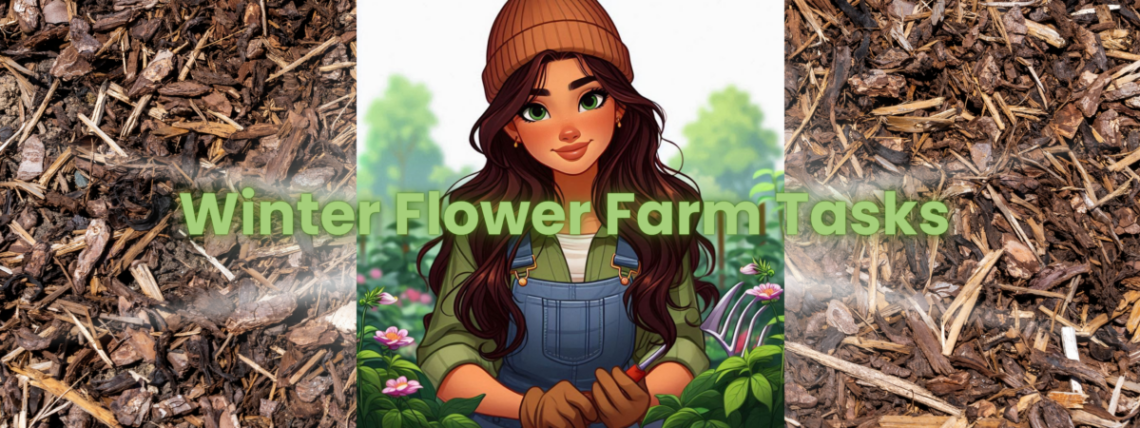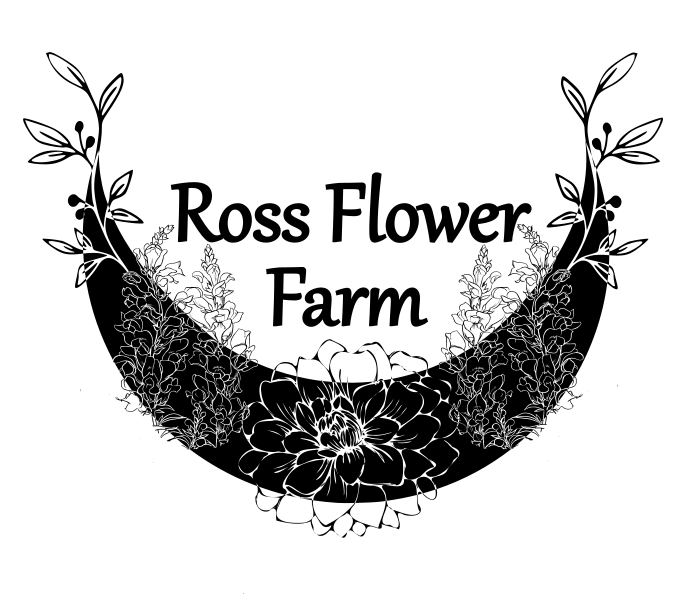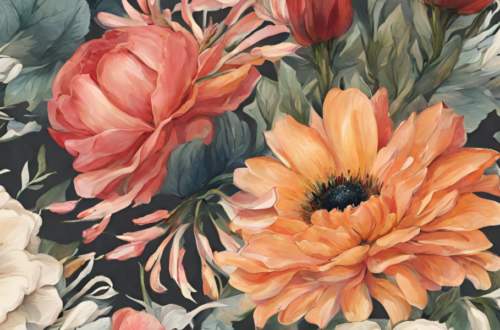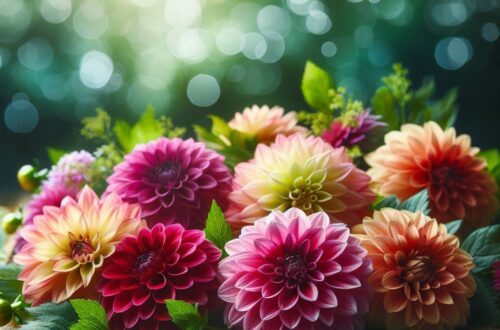
Nurturing a Winter Wonderland: My Essential Flower Farming Practices
As winter settles in, many people tuck away their gardening gloves and wait for spring. But for flower farmers like me, winter isn’t a time to step back—it’s an opportunity to lay the groundwork for next season’s blooms. Here at Ross Flower Farm in the beautiful Skagit Valley of Washington, I’ve come to embrace winter as a season of preparation, care, and quiet anticipation. There’s something deeply rewarding about tending to my flower farm in the crisp air, knowing that each small effort now will bring bursts of color in just a few months. So let’s grab a warm drink, bundle up, and dig into the ways you can nurture your flower farm this winter!
Preparing Your Flower Beds: A Love Letter to the Soil
Healthy soil is the foundation of any thriving flower farm, and winter is the perfect time to nurture it. Instead of letting the cold freeze everything solid, I use this season to enrich my beds with organic matter—compost, well-rotted leaves, and a thick layer of protective mulch. Not only does this keep the soil from compacting under the weight of winter rain and frost, but it also feeds the earthworms and beneficial microbes working hard beneath the surface.
I still remember my first winter of mulching, feeling a mix of skepticism and hope as I spread layers of compost over my beds. By spring, when I dug my hands into the rich, living soil, I was amazed at the transformation. Seeing those earthworms wriggle through the beds was proof that my efforts had paid off. If you haven’t started winter mulching yet, trust me—it’s a game-changer.
Dividing and Waking Dahlia Tubers: A Ritual of Renewal
If there’s one flower I’ll never tire of growing, it’s the dahlia. Their spectacular blooms steal the show every season, but ensuring a strong dahlia crop starts in the winter. If your dahlia tubers have outgrown their spaces—or if you’re growing them for tuber sales—now is the time to dig them up, divide them, and store them properly for replanting.
I like to think of this process as tucking them in for a long winter nap. Gently lifting them from the soil with a garden fork, brushing off the dirt, and carefully separating the clumps feels almost meditative. And if you’re as eager as I am for an early start, you can wake some tubers for cuttings about six weeks before your last frost. Placing them in a cozy tray with soil and water, watching the first green shoots appear—it’s a little promise of the beauty to come.
Starting Seeds Indoors: The First Signs of Spring
Winter might seem like an unlikely time for planting, but it’s actually the perfect season to start seeds indoors. There’s nothing like the thrill of seeing those first tiny sprouts emerge under grow lights, reminding you that spring is just around the corner.
Every year, I get a little overexcited about seed-starting, filling trays with snapdragons, asters, sunflowers, and zinnias. My grow shelves become a jungle of green, and I wouldn’t have it any other way. If you’ve never started seeds indoors, I highly recommend giving it a try. A sunny windowsill or a good set of grow lights will set you up for success, and by the time spring arrives, you’ll have strong, healthy seedlings ready to plant.
Dormant Pruning: Shaping the Future
Winter pruning always feels a bit like editing a novel—you have to cut things back to let the real story shine. Trees, shrubs, and perennials enter dormancy during the cold months, making it the best time to remove dead or overgrown branches and encourage healthy spring growth.
Last winter, I made the tough decision to prune back some of my older fruit trees. I’ll admit, I hesitated before making the first cut, but by spring, the new growth was thriving, and I knew I had made the right choice. Whether you’re shaping your roses, cutting back berry canes, or trimming your perennials, pruning now ensures a lush, vibrant season ahead.
Cultivating a Flower Farm: Dreaming in Color
Winter is also the perfect time to dream. If you’ve ever imagined transforming your space into a flourishing flower farm, now’s your chance to plan it out. Sketching designs, researching plant combinations, and visualizing the flow of pathways and flower beds—all of this dreaming will set the stage for a truly abundant season come spring.
Personally, I’m envisioning a riot of color across my farm—cheerful daisies, fragrant lavender, and towering hollyhocks. I love picturing how the bees will flit from bloom to bloom, how the wind will make the flowers dance. Taking the time to plan in winter means that when planting season arrives, I’ll be ready to bring that vision to life.
Winter Flower Farming To-Do List
- Mulch for Protection: Add organic matter and mulch to your flower beds to insulate and enrich the soil.
- Divide Dahlias: Take time to separate and store tubers for strong, healthy plants next season.
- Start Seeds Indoors: Get a head start on the growing season with your favorite annuals and perennials.
- Prune for Growth: Trim back trees and perennials to encourage fresh, vigorous growth in spring.
- Plan Your Farm: Dream, sketch, and prepare for the beautiful flower beds you’ll create in the months ahead.
Embracing the Quiet Beauty of Winter
Winter may slow the visible growth on the farm, but behind the scenes, so much is happening. The soil is restoring itself, tubers are waiting patiently, seeds are stretching toward the light, and the bones of our flower farms are taking shape. By tending to these tasks now, we’re setting ourselves up for a season of abundance and beauty.
I’d love to hear from you! How are you preparing your flower farm this winter? Share your thoughts in the comments, and if you want to follow along on my journey at Ross Flower Farm, be sure to subscribe or visit adventuresinthegarden.com. Here’s to a winter full of growth, dreaming, and cozy farm planning!







Thank you for your expertise – I -have a small garden that gives me joy, exercise and flowers which I love to share.
Thank you for your very kind words and for reading my post. I’m so grateful that you understand where I’m coming from, and I love that you’re also a gardening enthusiast. That makes my heart so happy to know that someone out there loves growing flowers like I do! It’s always fun to share my knowledge of something I enjoy.